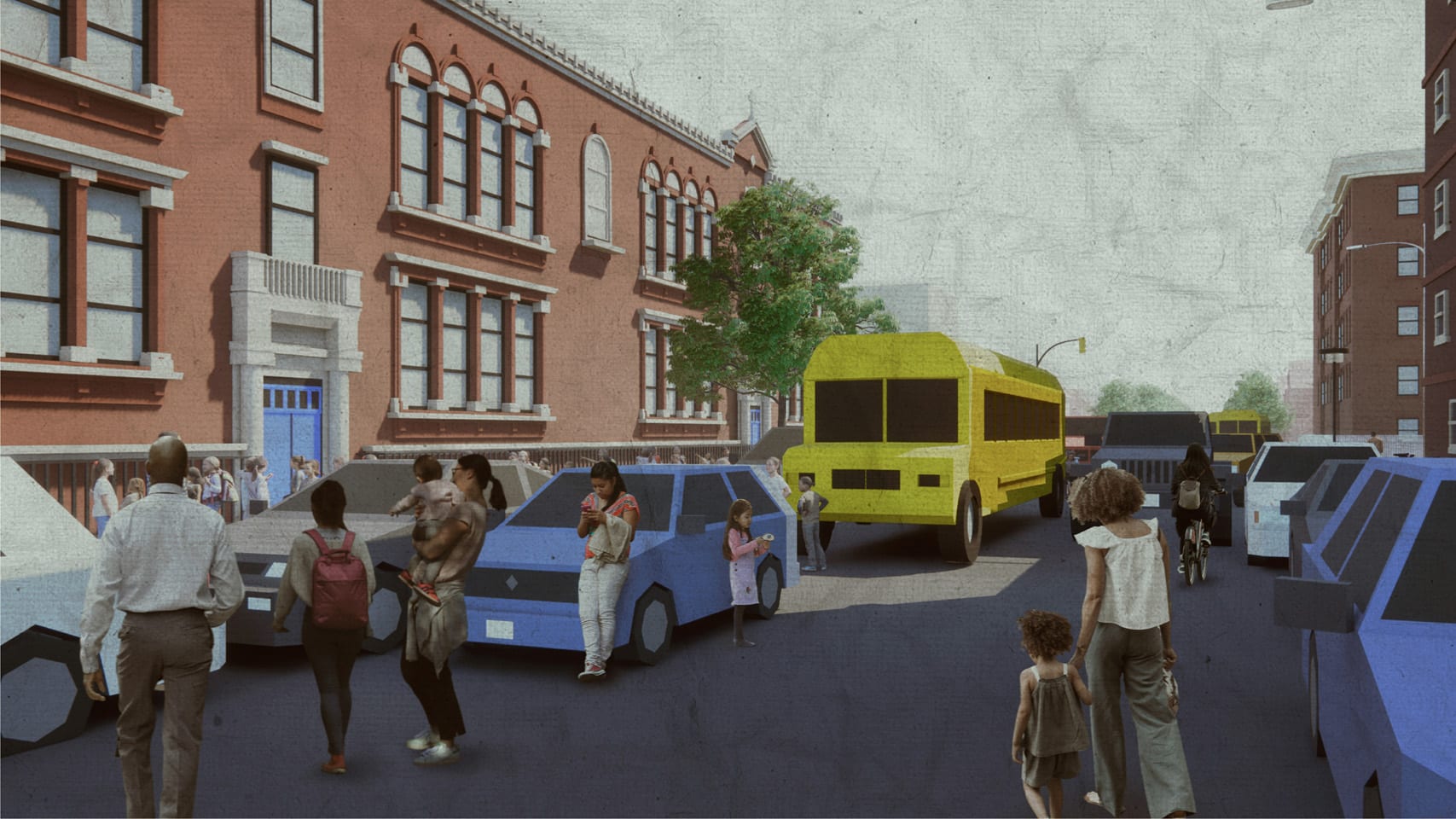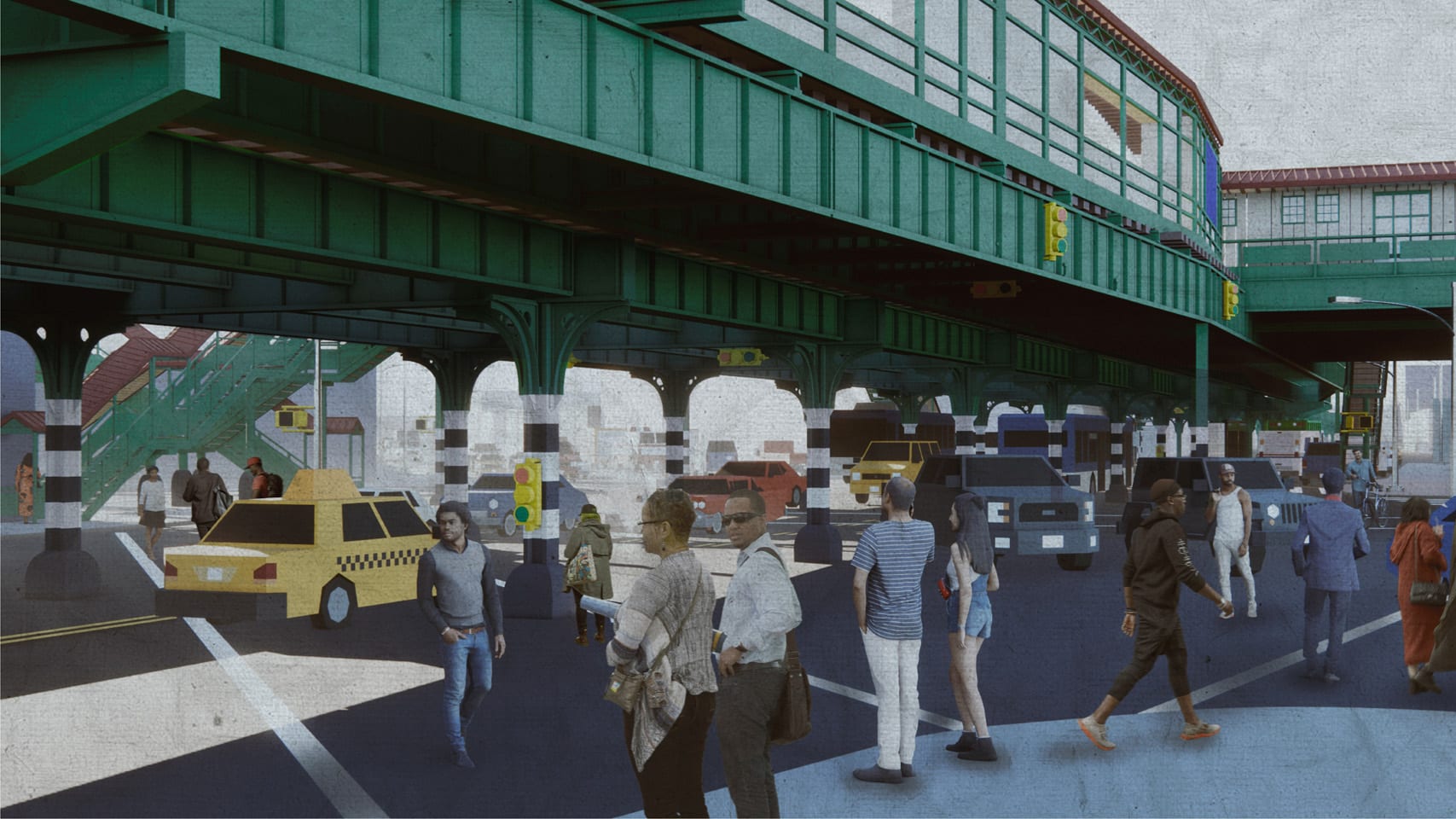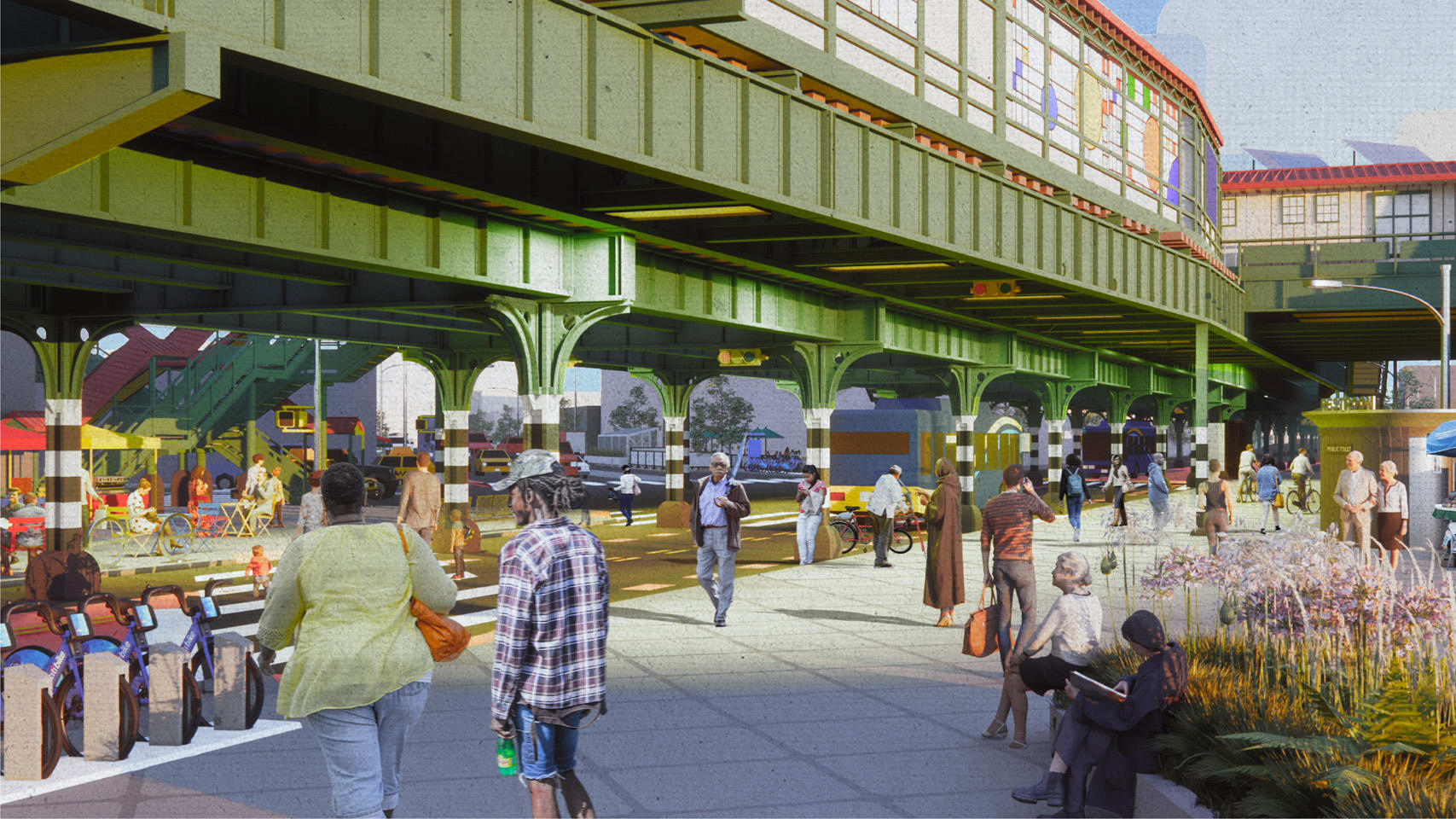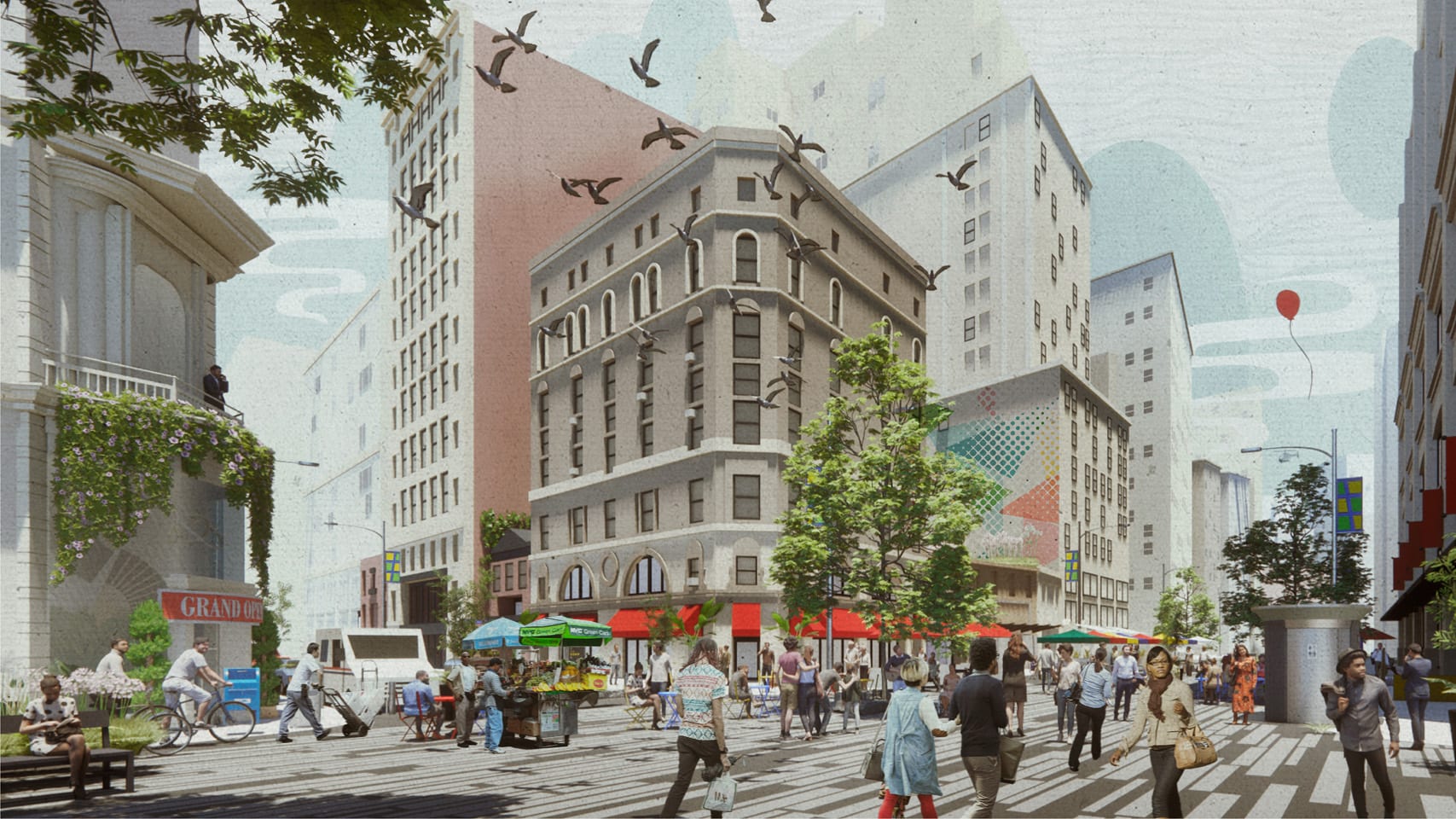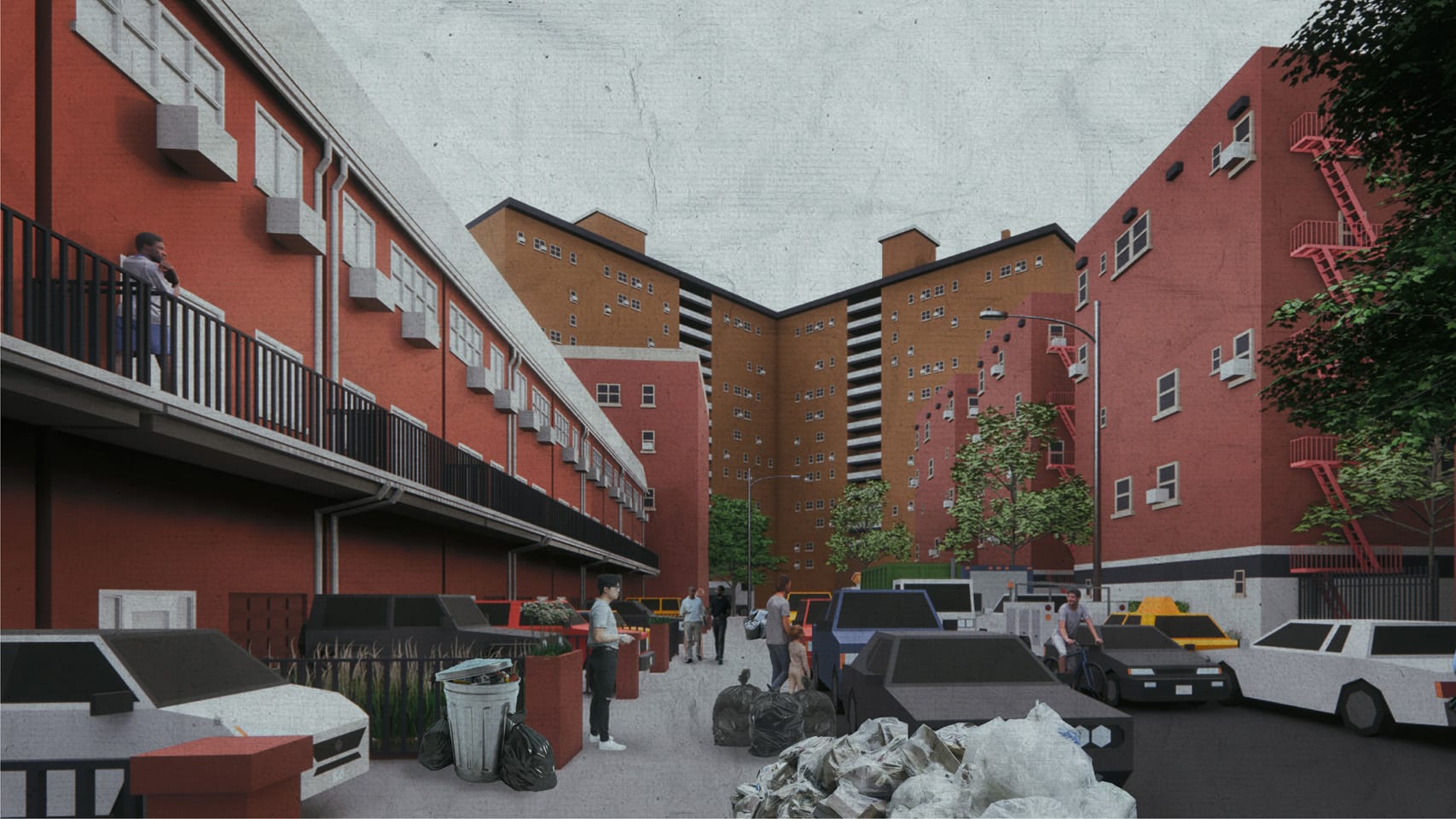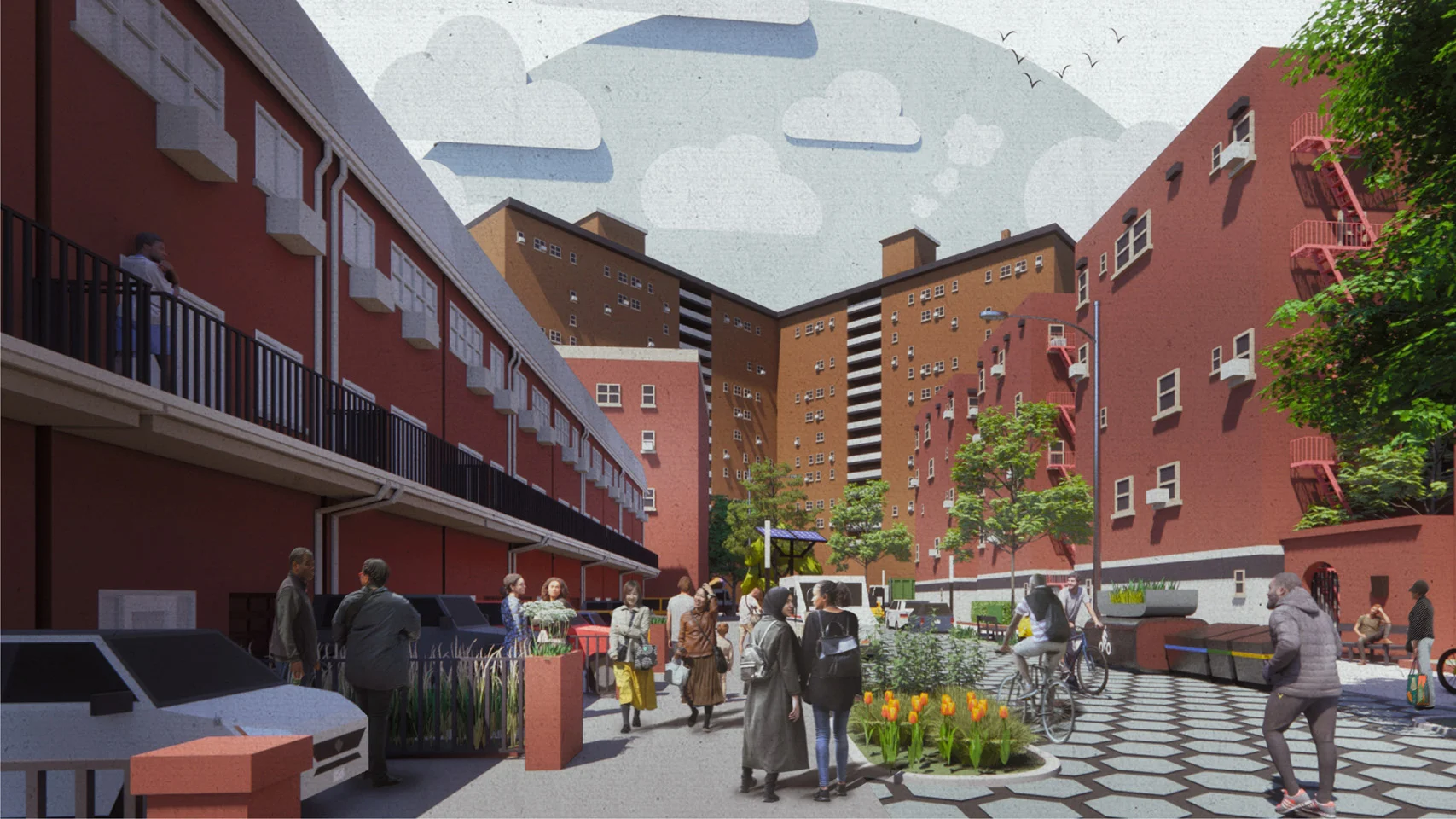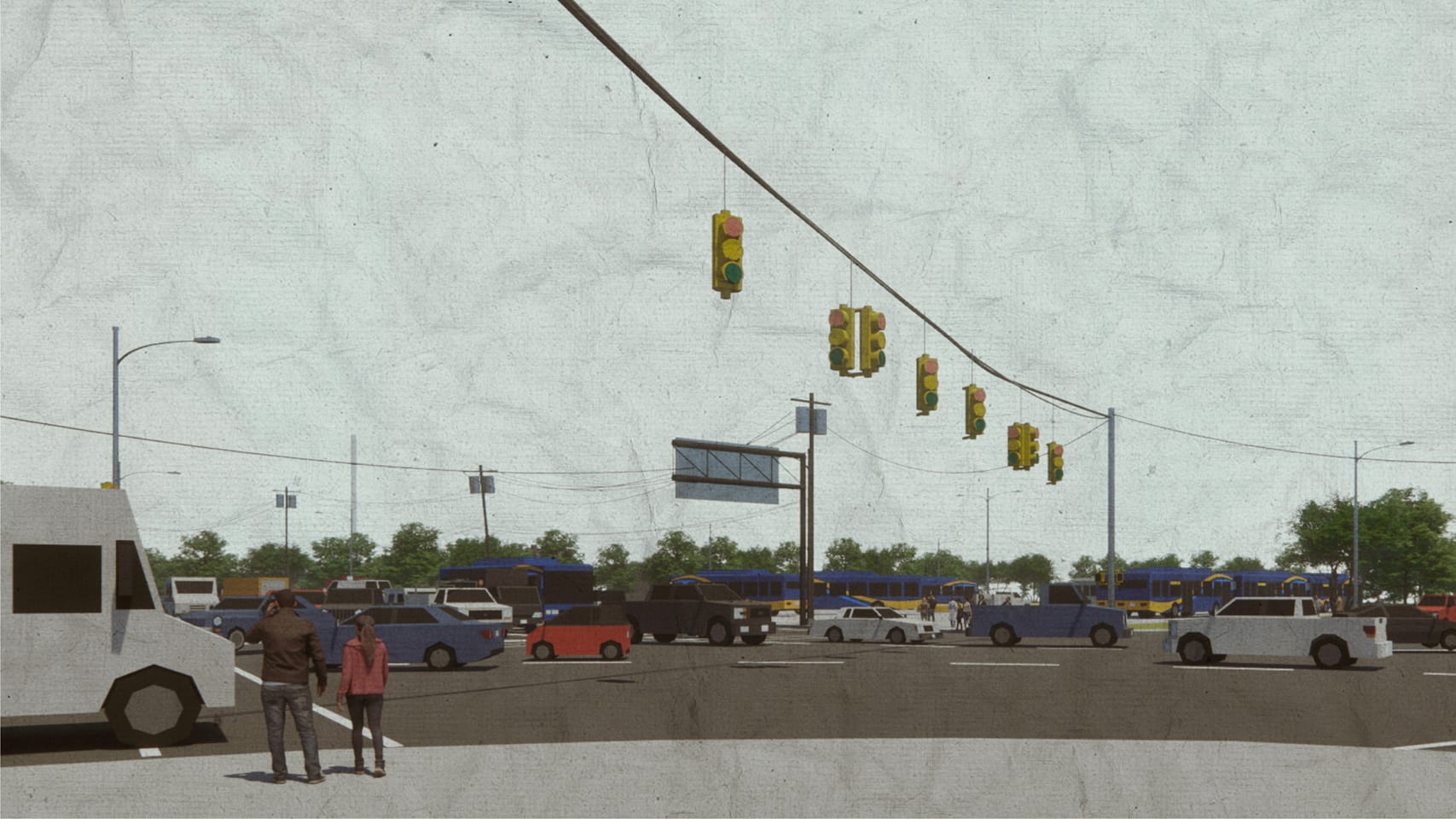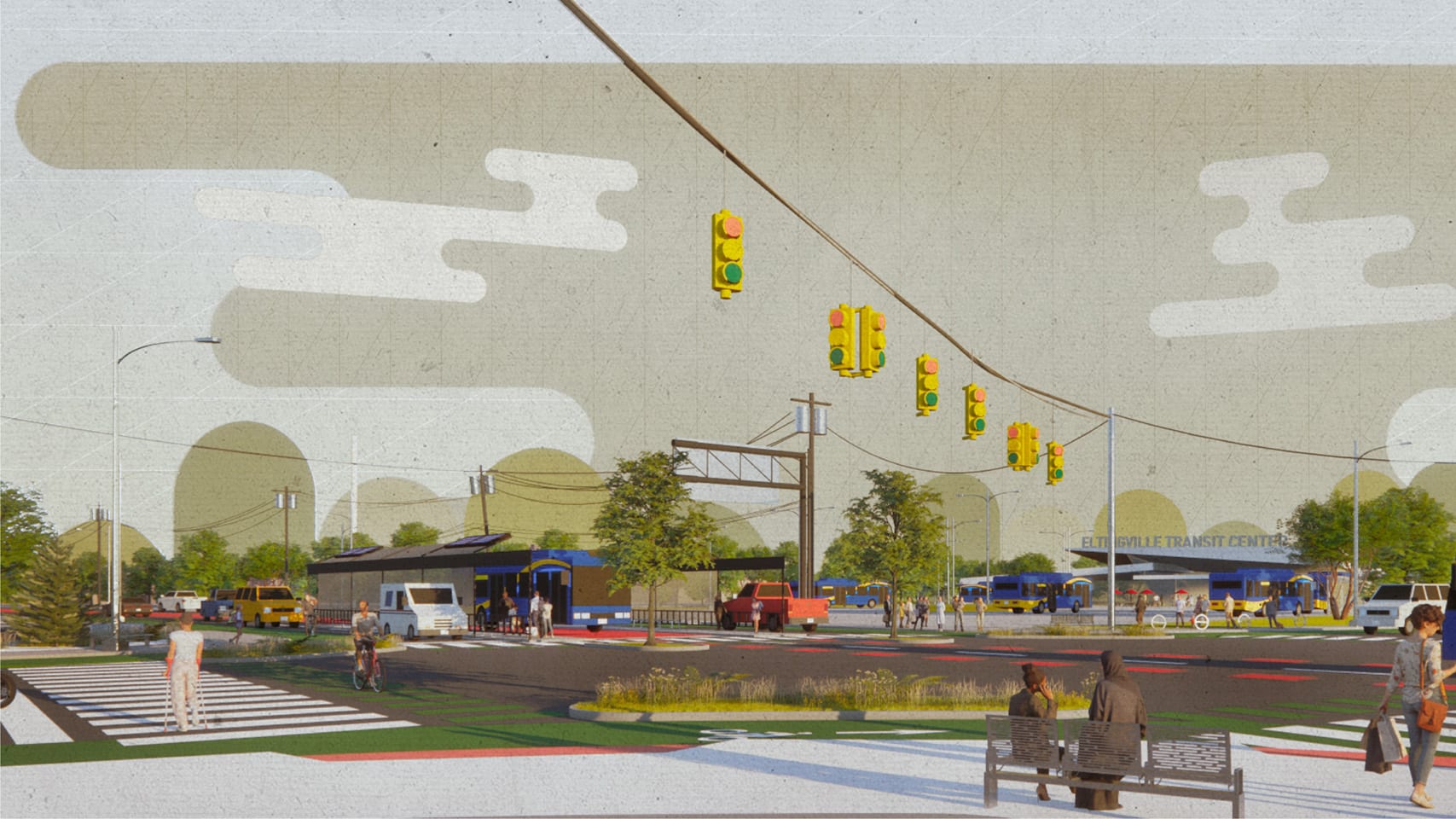When Danny Harris’s kids, 2 and 5 years old, draw a picture of a city, they draw a street full of cars. It’s an image that probably comes to mind for a lot of city dwellers—the packed traffic that fills the grid of streets; cabs, buses, and cars fighting for space—but it’s one that Harris, the executive director of the New York City transit advocacy group Transportation Alternatives (TA), hopes to change. He wants New Yorkers to envision how their streets could look if 25% of that space was taken back from private cars and given to the entire public, and a new visual report from TA shows specific examples.
In Manhattan, at Broadway and East 17th, a busy commercial street is shown full of double-parked cars, crosswalks that aren’t cleared, and pollution from all the traffic. But with a few changes—bike parking and car-free public plazas—the TA report turns that same stressful intersection into one full of pedestrians, with public restrooms, street markets, and dedicated drop-off zones for retail spaces or people who do need to get to that area by car.
[Image: WXY Studio/Transportation Alternatives/NYC 25×25]The redesign would not only reduce traffic and traffic-related pollution—converting streets to car-free pedestrian plazas in Times Square reduced the nitrogen oxide pollution by 63% and nitrogen dioxide pollution by 41%—it would benefit businesses, too. When car parking was turned into public seating on Pearl Street in Manhattan, 100 people over the course of the day could use space that once housed a single car, and sales at local shops increased 14%.
In another example, a residential street in Queens (58th Avenue at Junction Boulevard) is shown with piles of trash bags crowding the narrow sidewalks and the rest of the public space devoted to cars, not to seating or anywhere for neighborhood kids to play. By adding on-street trash bins and narrowing the road in favor of a wider sidewalk, there’s room for bike parking, trees, and benches. Space for added greenery could not only help sequester car emissions but help keep that residential street cooler.
[Image: WXY Studio/Transportation Alternatives/NYC 25×25]The report serves to illustrate TA’s 25×25 campaign, which challenges New York’s next leaders to put 25% of street space to use for things other than cars by 2025. (Currently, TA estimates 75% of street space is dedicated to the movement and storage of vehicles.) For TA, it’s about more than building protected bike lanes; radically changing the way our streets look could speed New York’s economic recovery, help solve health and access inequities, and save the city billions in costs accrued from traffic crashes, lost time, air pollution, hot neighborhoods, and more. “We can’t afford not to make this change,” Harris says.
The through line of all the examples (the report shows five street types—arterial, commerce, residential, school, and transit streets—across all five boroughs, identifying current problems and proposed solutions) is that “we can create spaces and streets that work for drivers, that work for pedestrians, that work for cyclists, that work for public transit, and that serve more than just the movement and storage of private vehicles,” Harris says. That image of car-clogged streets that comes to mind when his kids doodle is an example of how much car culture is ingrained in our cities, even for people who don’t own or drive cars. And a majority of New York households don’t own a car, so shouldn’t they demand more of this public space?
During the pandemic, they started to. Open streets, which were shuttered to cars for certain hours on certain days, and the use of parking space for outdoor dining gave people a glimpse of new ways they could benefit from street space. Before COVID-19, people may have never imagined they’d have brunch within a structure built where cars once parked; the TA visual report takes all that further to imagine what other amenities our streets could offer in the future, says David Vega-Barachowitz, director of urban design at WXY, the architecture studio that created the renderings.
[Image: WXY Studio/Transportation Alternatives/NYC 25×25]“People were presented with an alternative use of the curb,” he says of the open streets and outdoor dining initiatives. “For many people, it’s the first time where they began to see, ‘Oh wow, our streets can behave in a different way.’ . . . The challenge and the leap to realize some of the vision we’ve put forward with this campaign is going to be, are New Yorkers able to take that next step.”
Not every possible change is as fun as outdoor dining, but they all have benefits. One of Vega-Barachowitz’s favorite details is the consolidated trash and recycling bins that would eliminate those classically New York piles of garbage bags on sidewalks (and the rodents that accompany them). “You hope at some point in the future, New Yorkers are looking back at old photographs from 2020 and see trash bags piled on the street and it’s like, ‘You lived through that?'” he says. It’s like thinking back to how overnight, on-street parking wasn’t legal until the 1950s. “Now people assume the default use of the curb is for parking,” he says. “The reality is streets can and do change, they have changed, and they can change again.”
To Harris, the 25×25 vision is not revolutionary; it builds on progress New York has already made when it comes to expanding its bike-lane network or adding more pedestrian plazas. It just pushes readers to reimagine how all streets across the entire city could be more livable and equitable. “If the city is squandering street space on simply the movement and storage of vehicles instead of any of these other amenities that can bring joy, can bring equity, can bring recovery,” he says, “then our city is continuing to squander one of its greatest assets.”
Recognize your brand’s excellence by applying to this year’s Brands That Matter Awards before the early-rate deadline, May 3.
